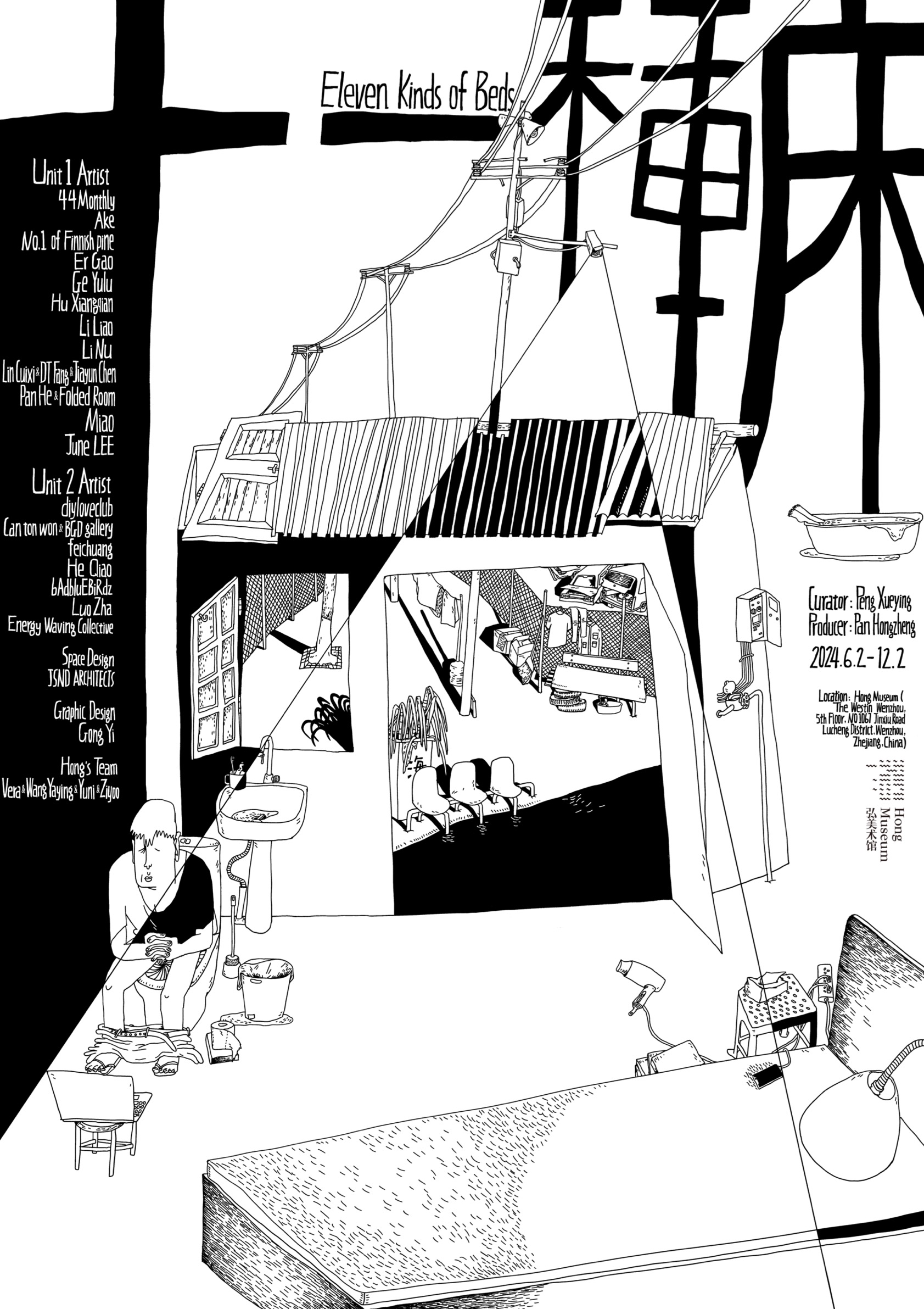
Hong Museum, Wenzhou is pleased to present the exhibition "Eleven Kinds of Beds" on June 2, 2024. Curated by Peng Xueying, produced by Pan Hongzheng, the exhibition takes "beds" as a starting point, aiming to explore practices and imaginations on how to construct new social relationships and lifestyles: How do we create public space from personal life forms to provide differentiated imagination? How can we respond to and resist the constraints of the environment, as well as foster more diverse and intimate connections with a more flexible body and mind, and more shareable methods, while still maintaining individual privacy, dignity, and independence? These are the questions posed by the exhibition "Eleven Kinds of Beds."
This exhibition is divided into two units: In the first unit, twelve individuals or groups of artists will respond to the exhibition theme and the spatial relationship of the artworks. The second unit invites around seven individuals or groups of creators/artistic teams from different places to come to Wenzhou and Hong Museum during the exhibition period, to engage in activities including city walks, workshops, and performances. This further loosens the homogeneity of specific spaces and people, creating an environment that continuously expands experiences and fosters connections-people from all walks of life, with different skills and identities, gather together to engage in all kinds of stuff, either individually or collectively. Finally, when the time is up, they leave. The beddings are rolled up, and the "beds" disappear, but the space and experiences remain in our bodies.
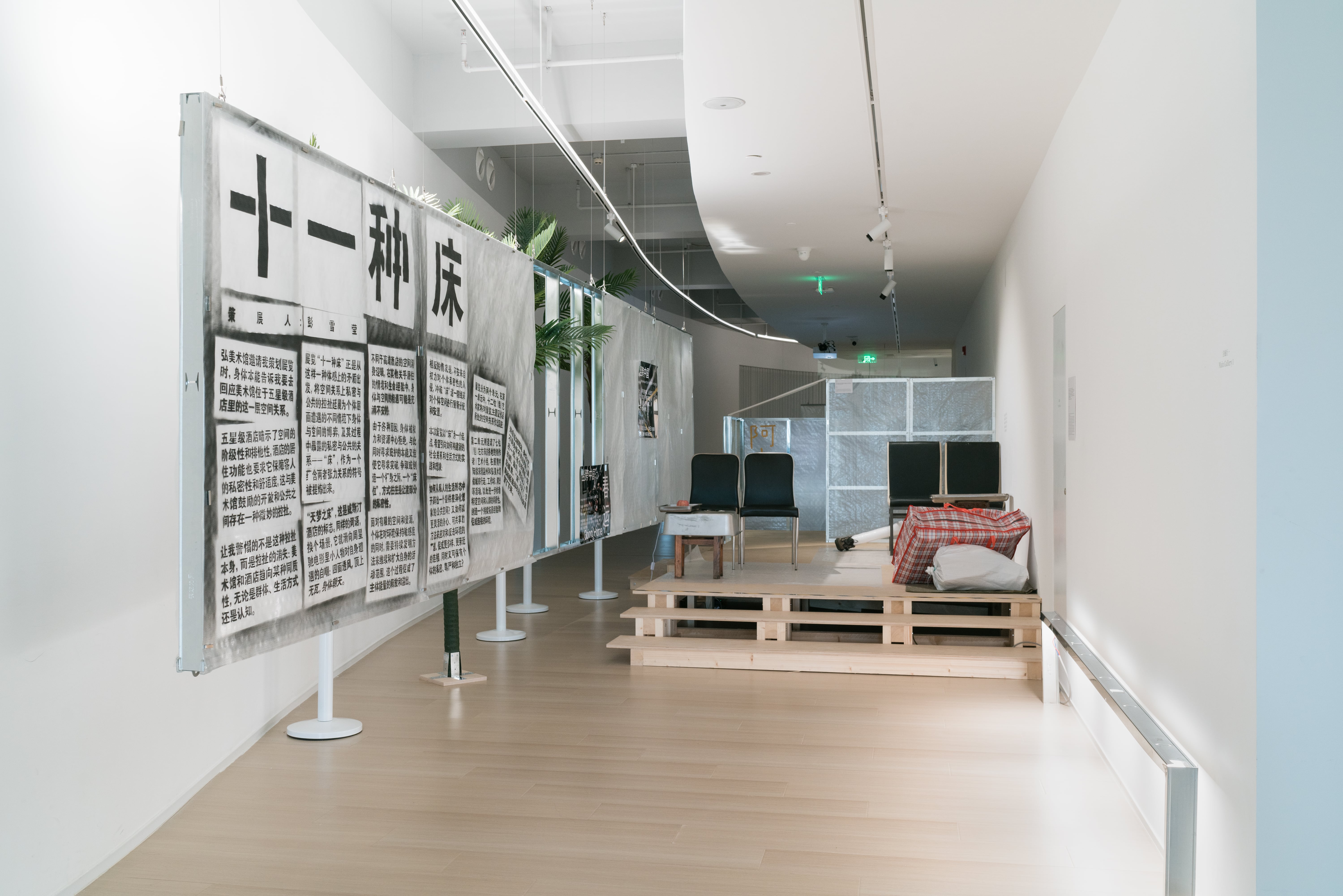
Entrance of Eleven Kinds of Beds
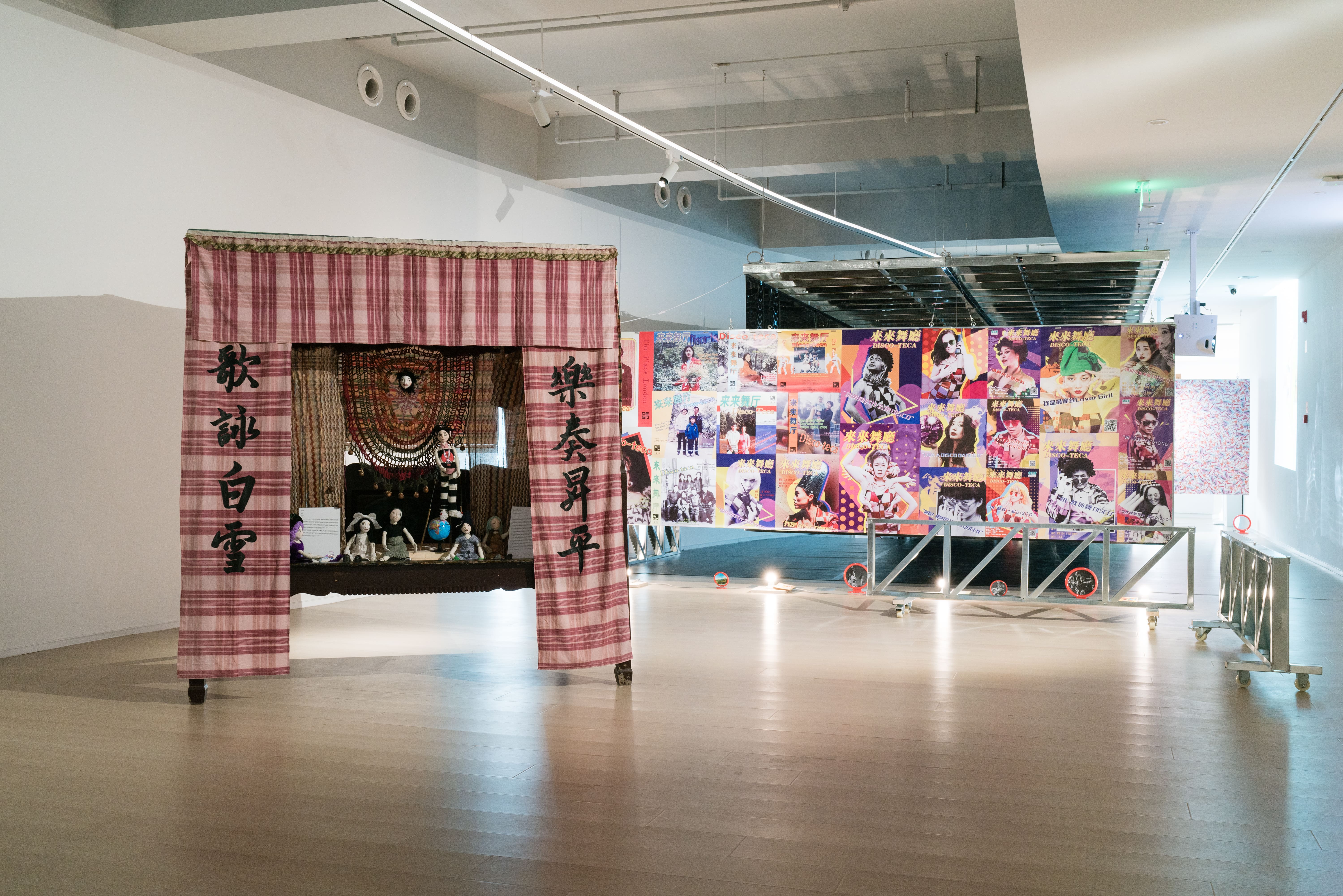
Simiao Xiuqin, New East Village New Brides, installation comprehensive materials (2024)
Er Gao, Disco-teca, images, community dance, tablet painting, charcoal painting, documentation (since 2024)
》《单人床02(操场)》-min-p-500.jpg)
Li Liao, Single Bed 01 (Optics Valley), performance single channel digital video (color, sounds) 24'02'' (2011)
Single Bed 02 (Playground), performance single channel digital video (color, sounds) 112'07'' (2011)

June LEE, ZZJJ, installation iron, wood, cotton fabric, paper, etc. (2024)

44 Monthly, 44 Comic Convention (1st Issue): Through dreams' layers, reality would twists, multimedia installation, variable size, stereo audio, potted plant, soybean sprouts, electronic component, inkjet printing split shot script, color photos, hand drawn fabric
44 Monthly (9st Issue), 44 Monthly (10st Issue), 44 Comic Convention (1st Issue): Through dreams' layers, reality would twists (2024)

Li Nu, Restricted Sadness, single spring bed, iron, bitumen 195 x 74 x 205cm (2020)
Li Nu, Bed-In for Peace, performance (2020)
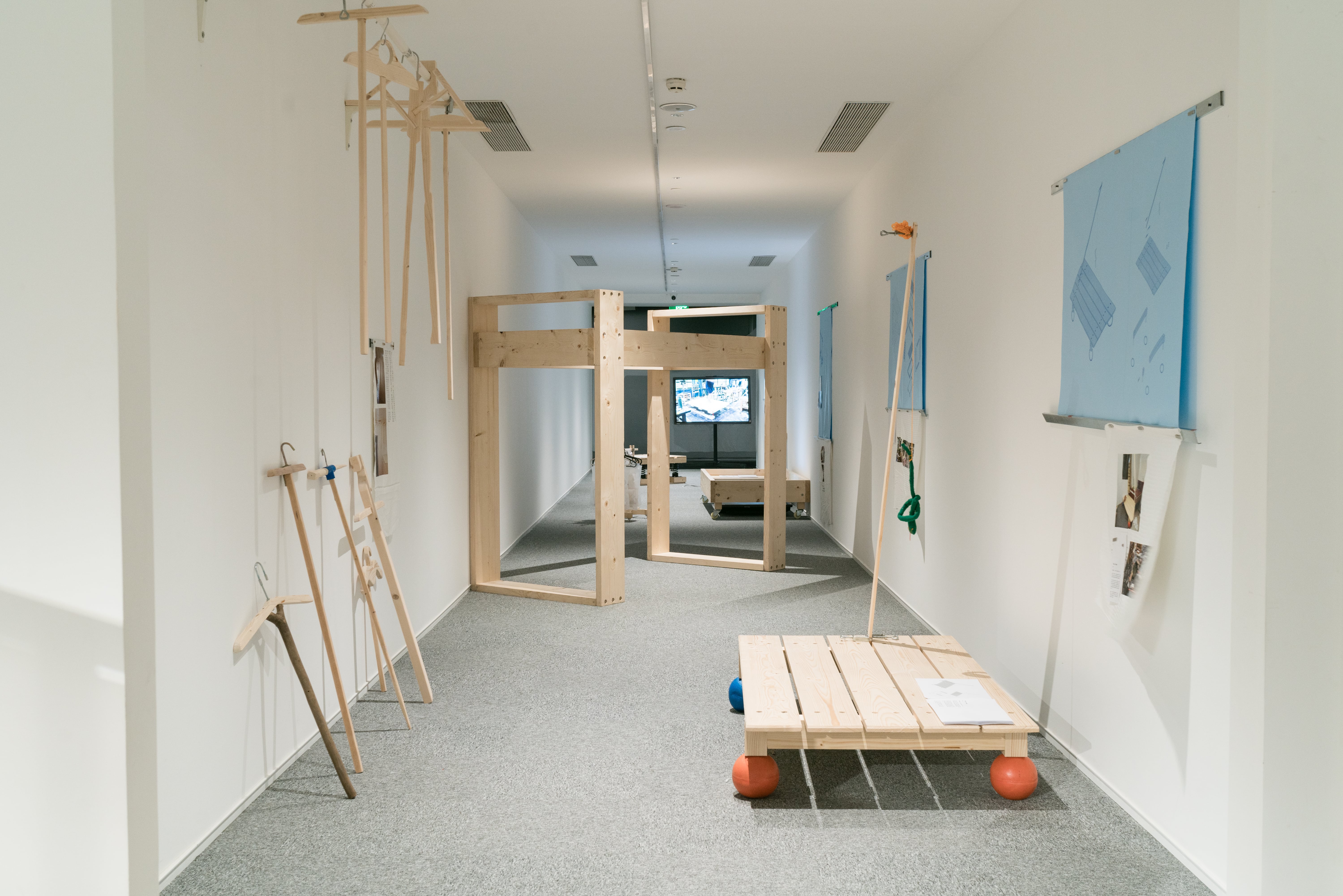
No.1 House of Finnish Pine, Make Yourself a Bed Out of Finnish Pine, installation, Finnish pine, screws, ratchet straps, comprehensive materials (2024)
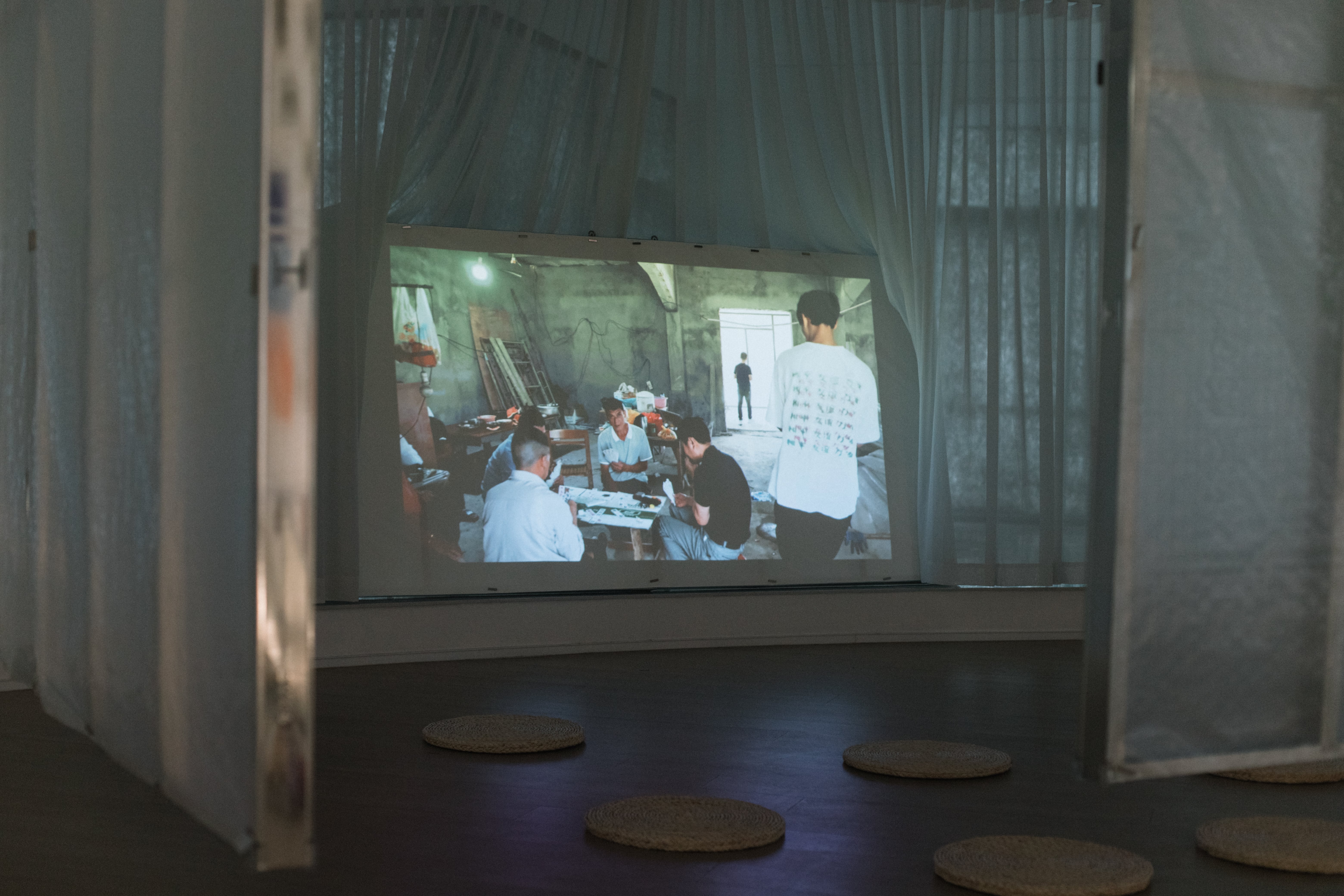
Hu Xiangqian, The Social Metaverse, digital file + collection certificate (48'11''), total editions: 5 + 2AP, 1/5 (2023)
Unit1
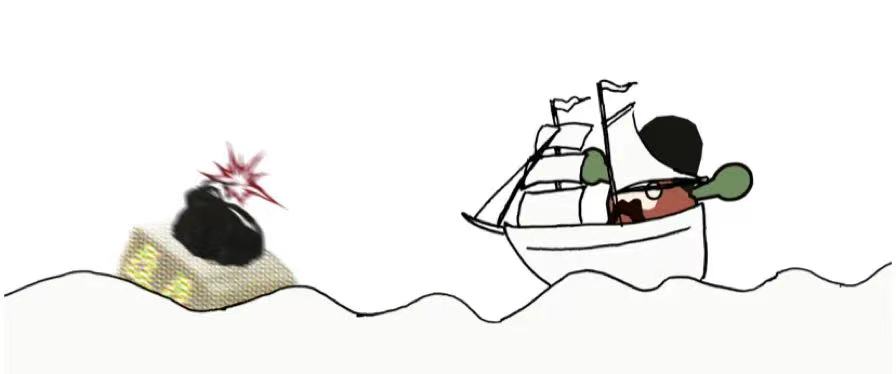
44 Monthly
44 MonthlyIn March 2020, as the epidemic spread across the globe, the good folks at Theater 44, in different corners of the world and in varying degrees of boredom, panic, misery, and disorientation, began the practice of collective writing. Collective writing unites individuals in quarantine, and our first few installments were titled "The Thesaurus of Violence," an attempt to regurgitate and archive our feelings for 2019-2020.
Each participant was given one day, 24 hours, to write and edit. On the same document, participants can make new additions to what has already been written on any subsequent day, including expanding, deleting, altering, adding text and structure, adding or deleting images, multimedia, attachments or hyperlinks, and anything else that can be described, perceived, and edited, both online and offline. You can read in 44 Monthly: comics, fiction and science fiction, government documents, historical documents, true or false, chat logs, divine prophecies, Internet screenshots... Each writing period lasts two to three weeks, and participants have one day of co-editing before the end of the period, when it is finalized. To date, ten writing sessions have been completed by various participants.
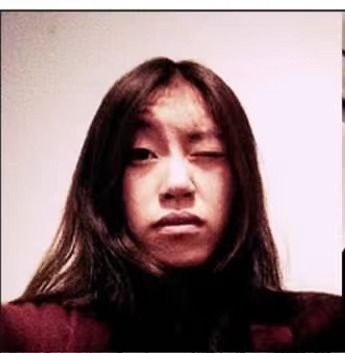
Ake
Ake, a Hainanese, crying representative, currently works and lives in Beijing. Engages onsite and context-specific creation of sound, events, performance, writings, and installations, also writes poetry, works as a kind of musician, organizer, and waitress; participates in organizing the “Wujin Tiny Concert” series; additionally involved in collaborative projects: Happy Music, 100 Seconds, B-Grade Horror Film Project…
Previously, also unexpectedly initiated the nomadic space A2 Space.
Arrives at the subtleties of life in a simple and direct manner and through ambiguous and winding paths, sometimes cannot return.
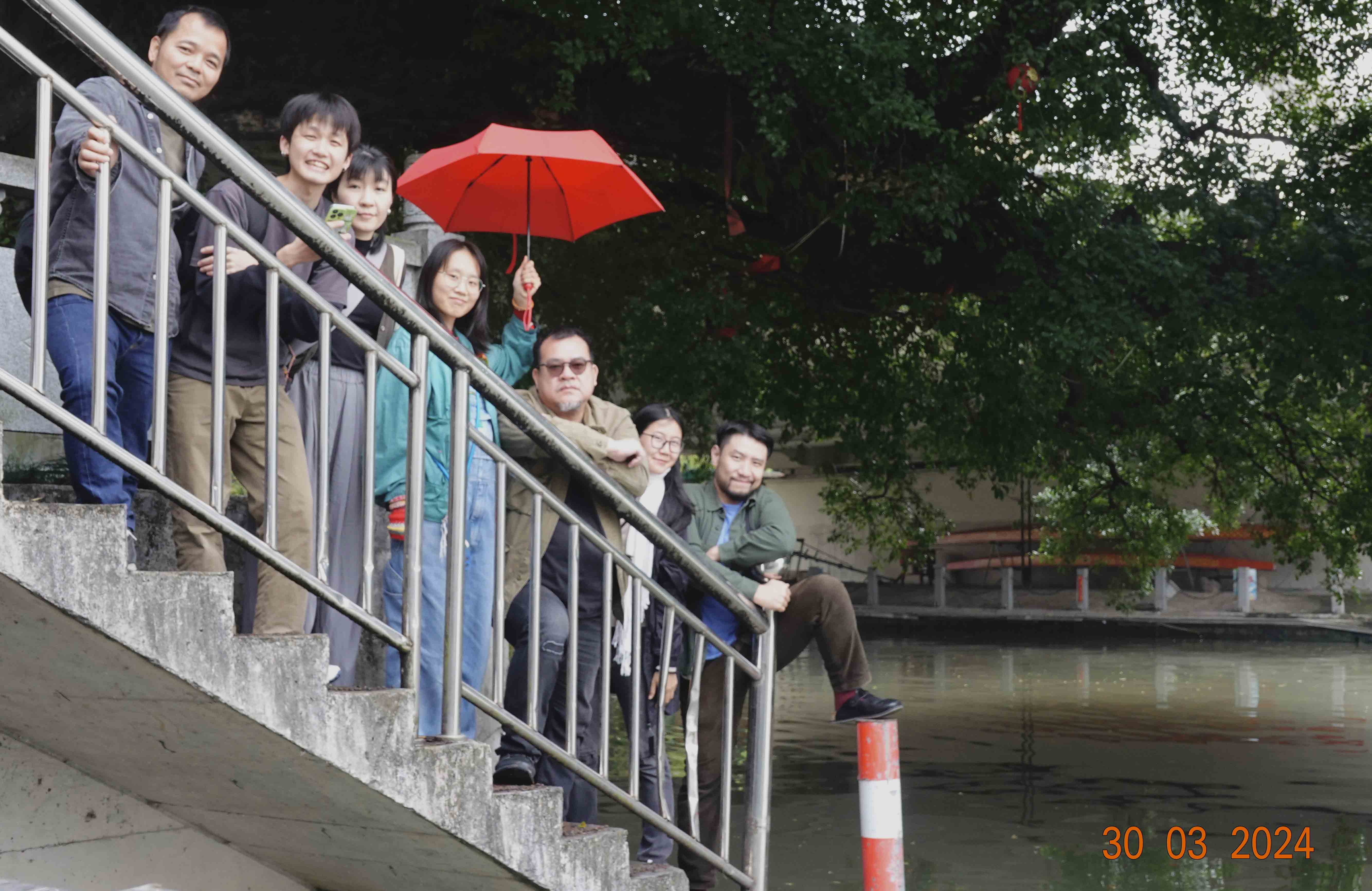
No.1 House of Finnish pine
No.1 House of Finnish pine is a collective project about hands-on creation. Finnish pine is an environmentally friendly, well-ordered, FSC-certified (sustainable) economic timber, which often attracts people to freely engage in various activities. This feeling is precisely what we gradually understand as a "youthful temperament" in our studio practice. Members with different professional backgrounds discuss concrete affairs and communicate through simple technical and material language in labor.
Members: Chen Zhuzi, Yu Jiahui, Ju Shuo, Ji Yinan, Zhuang Ji Wang, Su Kaiyin, Wang Chao(from left to right)
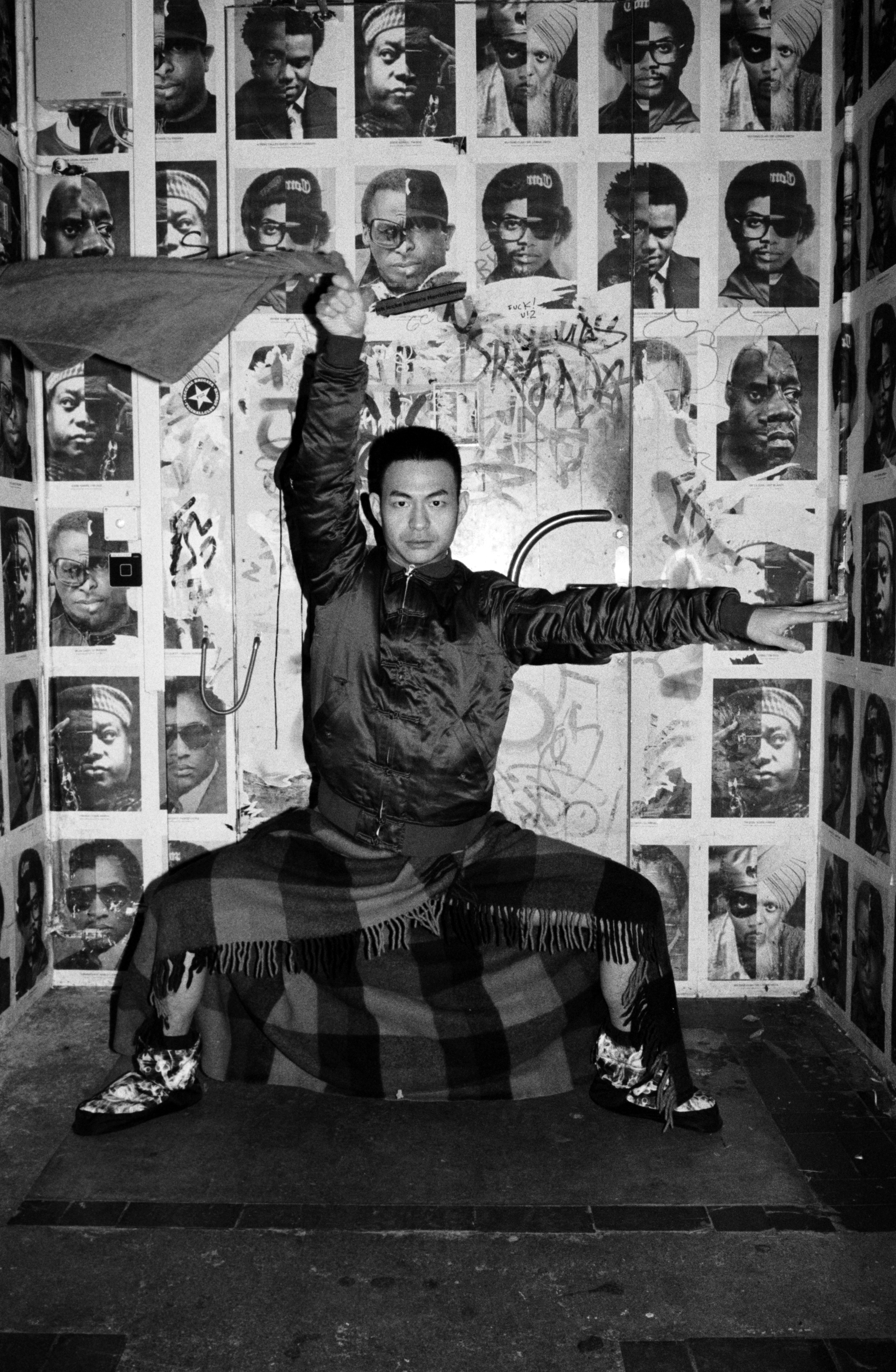
Er Gao
Er Gao (Ho Qi Wo), born in 1985, Yanjiang, Guangdong, currently works and lives in Guangzhou and Shunde. After graduating from The Hong Kong Academy for Performing Arts, he continued to study contemporary performance art critic in Singapore. He founded Ergao Dance Production Group in 2007. His productions continuously see the body as the primary medium of work and the site of artistic investigation, using diverse strategies to explore Chinese social and cultural identities, sex, gender and other topics. His recent works focus on the floating new urban migrants in Chinese society, the "shanzhai" (copycat) body, and issues of public participation in dance.

Ge Yulu
Ge Yulu (b. 1990, Wuhan) graduated from the Media Art Department of Hubei Institute of Fine Arts in 2013, and received a M.F.A. from the Experimental Art Department at Central Academy of Fine Arts in 2018. He now lives and works on the outskirts of Beijing. He held solo exhibitions at Beijing Commune, Beijing and Fei Art Museum, Guangzhou. He was nominated for the Art 8 Prize Youth Finalist Award and the 13th AAC Art China Young Artist Finalist Award in 2019. His eponymous solo exhibition “Ge Yulu” won Gallery Weekend Beijing 2020’s “Best Exhibition Award-Innovation Prize”.
Curated large-scale exhibition projects:
Gallery Weekend Beijing (GWBJ) Public Sector “The Collective Express”, opening exhibition of Sound Art Museum “Heaven on Earth”.
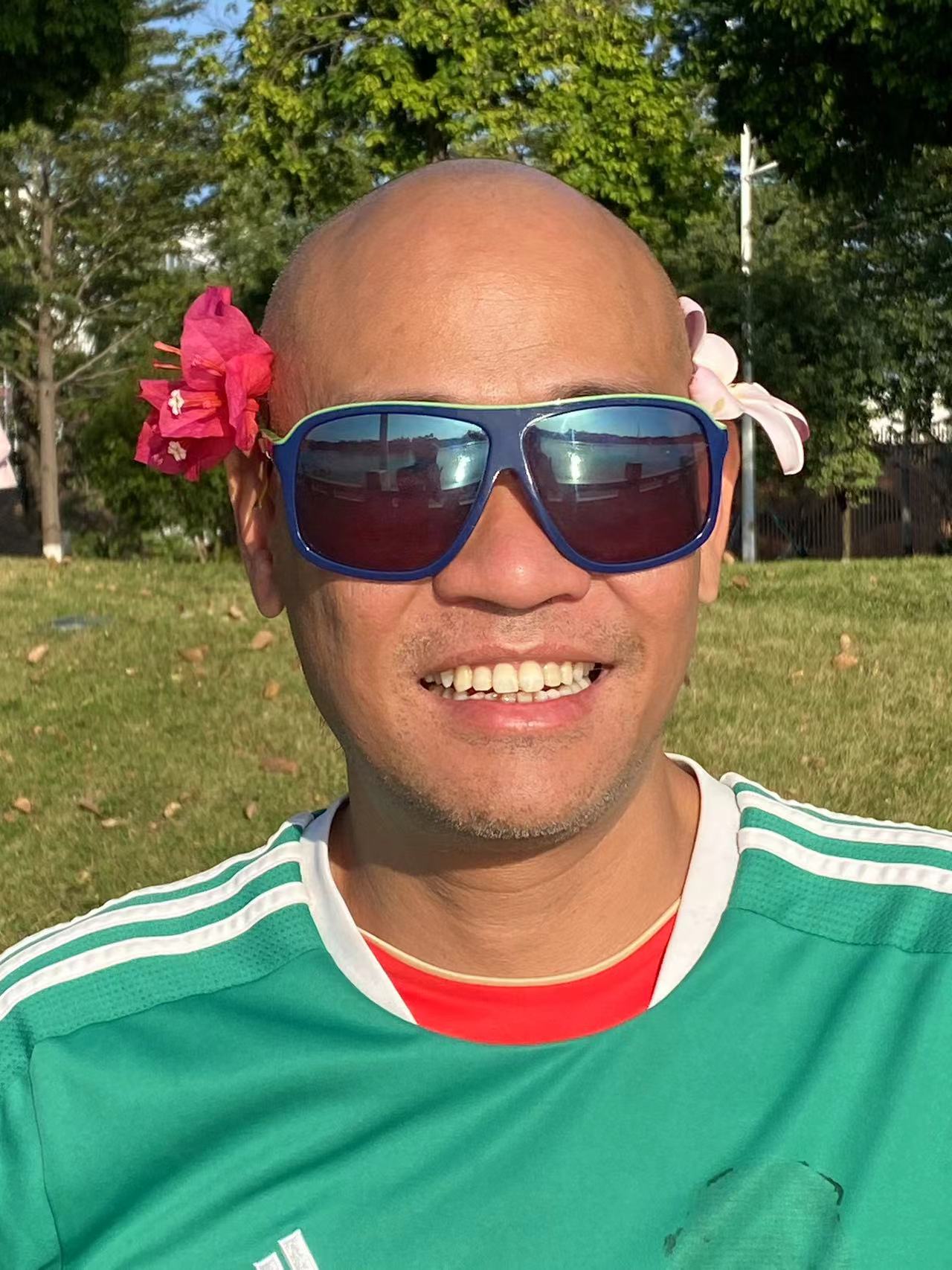
Hu Xiangqian
Hu Xiangqian, born in Leizhou, Guangdong in 1983, and graduated from the Fifth Studio, Department of Oil Painting at the Guangzhou Academy of Fine Arts in 2007. He currently works and lives in Guangzhou.
Hu Xiangqian is a young performance artist active in the contemporary art scene in China. His creative motivation stems purely from an intuitive desire, always adhering to the belief that only by experiencing the surrounding environment in a pure and genuine manner can one discover realities not known before. Hu’s artistic practice tends toward performance captured by video, inspired by the environment he experiences firsthand and his contemplation of the relationship between the body, performance artists, and performance itself. With a keen eye for the absurd, he skillfully highlights the contrasts in our society and amplifies minor incidents into major social signifiers.
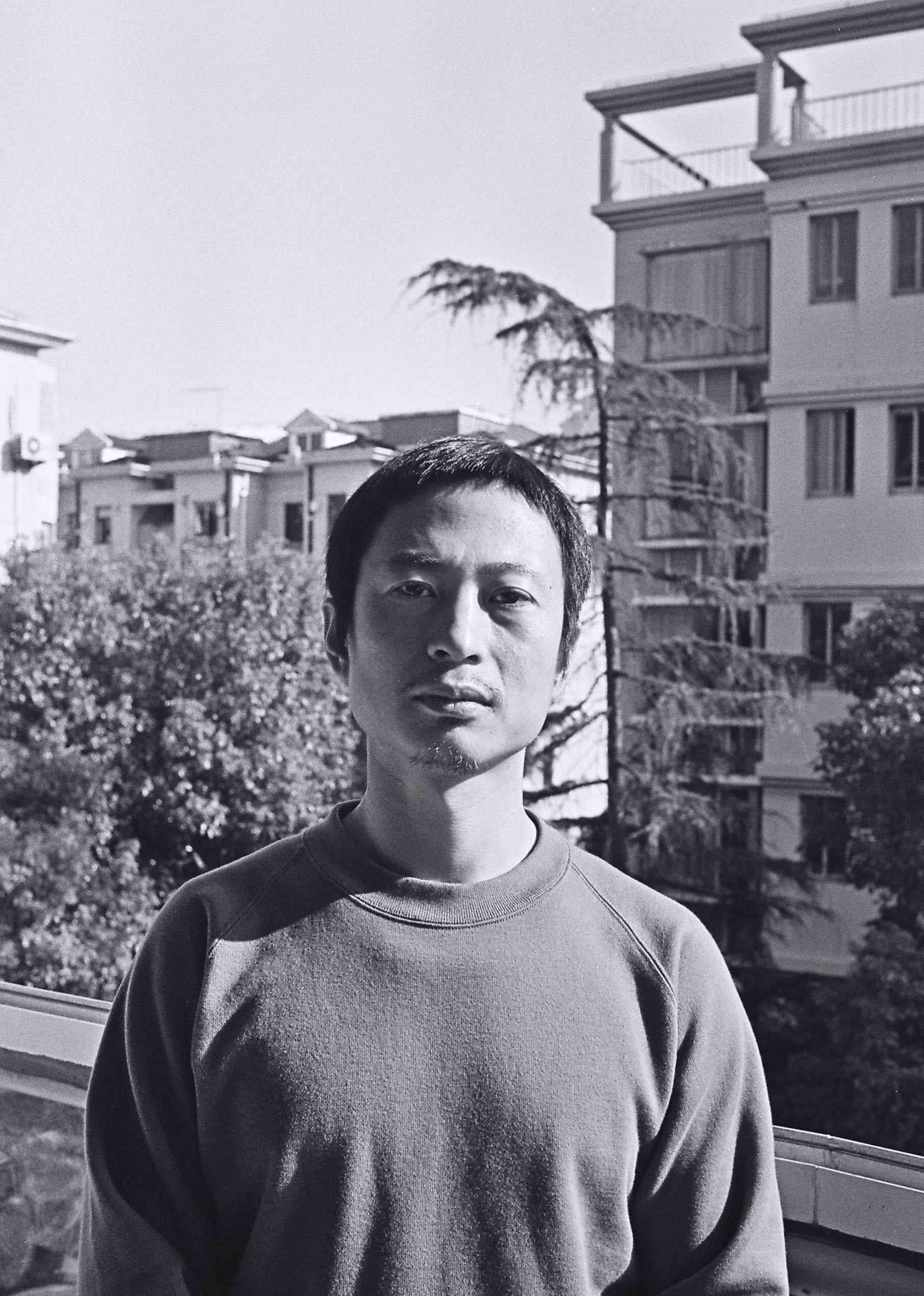
Li Liao
Creating semi-fictional autobiographical works based on daily life, Li Liao presents a series of real life situations mixed with artistic actions. Through his often allegorical and self-deprecating action strategy, Li Liao takes the initiative to set up or take advantage of a situation to reveal his concern for the real problems that plague society, applying “communal participation” to practicing what he preaches in micro-level social systems and under concrete circumstances. In this process, he also observes and questions the evaluation mechanisms and rules for family production, social production and artistic production and attempts to provide a set of playful strategies to deal with stress, thus evoking a rethinking of experience.
Li Liao (b. 1982, Honghu, Hubei Province, China) currently lives and works in Shenzhen, China. He received his BFA in Oil Painting at Hubei Institute of Fine Arts in 2005. Recent solo exhibitions include "Labour", MANGROVEGALLERY, Shenzhen, China(2023); The Wife Went to Start a Business, Pingshan Art Museum, Shenzhen, China(2023); Anacatesthesia, QIAO SPACE, Shanghai, China (2020); To Be A Better Man, WHITE SPACE BEIJING, Beijing, China (2019); “Art is Vacuum”, WHITE SPACE BEIJING, Beijing, China (2016). Recent group exhibitions include On Behalf of, QIAO SPACE, Shanghai, China (2021); Meditations in an Emergency, UCCA, Beijing, China (2020); Museum, Museum für Moderne Kunst (MMK) , Frankfurt, Germany (2019); The Street: Where The World Is Made, Mo.Co.Panacée, Montpellier, France; National Museum of the XXI Century Arts, Rome, Italy (2018-2019); The D-Tale: Video Art from the Pearl River Delta, Times Art Center Berlin, Berlin, Germany (2018); Performing Dramas, Centre National d’art et de Culture Georges Pompidou, Paris, France; Chi K11 Art Museum, Shanghai, China (2017); Dragon Liver Phoenix Brain, OCAT, Shanghai, China (2016); What About the Art? Contemporary Art from China, Qatar Museums Gallery Al Riwaq, Doha, Qatar (2016); Habits and Customs of ____ Are So Different from Ours That We Visit Them with The Same Sentiment That We Visit Exhibitions, Kadist Art Foundation Paris, Paris, France (2016); The 3rd Ural Industrial Biennial of Contemporary Art, Ekaterinburg, Russia (2015); Surround Audience, New Museum, New York, USA (2015). Since 2020, Li Liao transforms himself into an institution and initiate the “Fortune Exhibition of Li’s Family House”, in which Fengshui masters act as curators and guest artists create commissioned works.
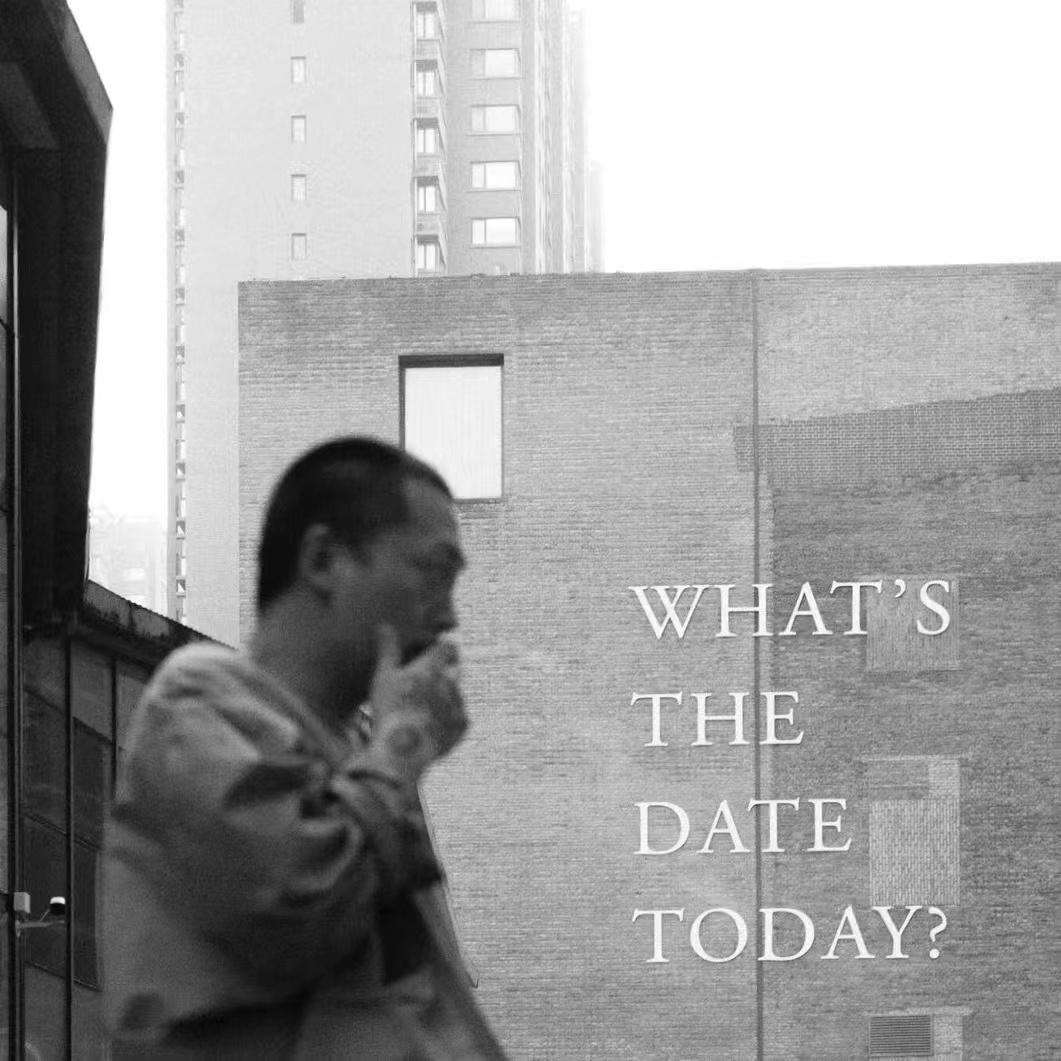
Li Nu
Li Nu graduated with an MA in Sculpture from Royal College of Art. He won the 2015 RBS (Royal British Society of Sculptors) Bursary Awards, and as a member of RBS, lives and works in Beijing.
Li Nu roots in everyday life. He subverts the perceived boundaries between documentary and fiction, representation and abstraction to explore and achieve a poetic language in art. Through capturing the details of everyday life, he aims to reflect the individual’s mood swings and the menials state of population in the evolution of macro-society. The apparently unpromising materials of everyday life are transformed into something metaphorical, poignant, humorous, poetic and dramatic, challenging us to question our received experiences about life and see the world afresh. The concept that he wants to express is never what you have seen. It is always wandering between void and solid.
Lin Cuixi & DT Fang & Jiayun Chen

Lin Cuixi, contemporary theater maker and programmer. She was born in Wenzhou and is currently based in Shanghai after years living abroad in Los Angeles and London. In 2018, she co-founded the performance-making collective "_ao_ao_ing ensemble" and has been engaged in long-term collective artistic practices in diverse forms thereafter. She focuses on the embodied politics and emotional experiences in contemporary life. Her works often revolve around a performance or action, using participatory performance, interactive websites, data algorithms, semi-fictions, and other media and tools to open up hidden non-linear narratives in the everyday. Her recent works include "WeaverGirl Project" and "Linzi's Party".
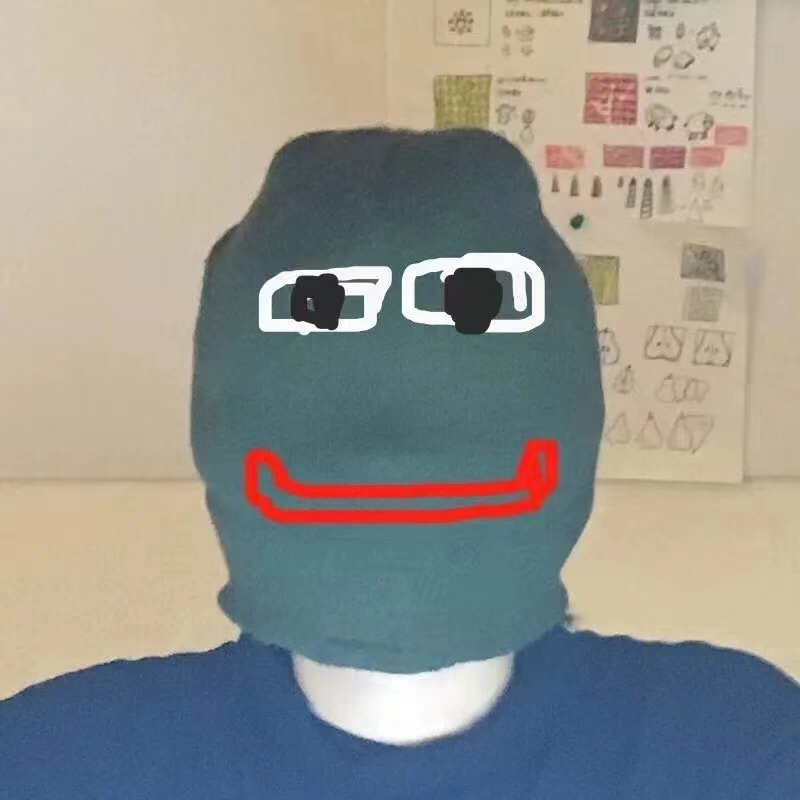
DT Fang, a Maskbook ID, a meme in the popular media.
This ID is used in day-to-day social practice, drifting nonstop through scenes and spaces, constantly in motion between the individual and the collective.
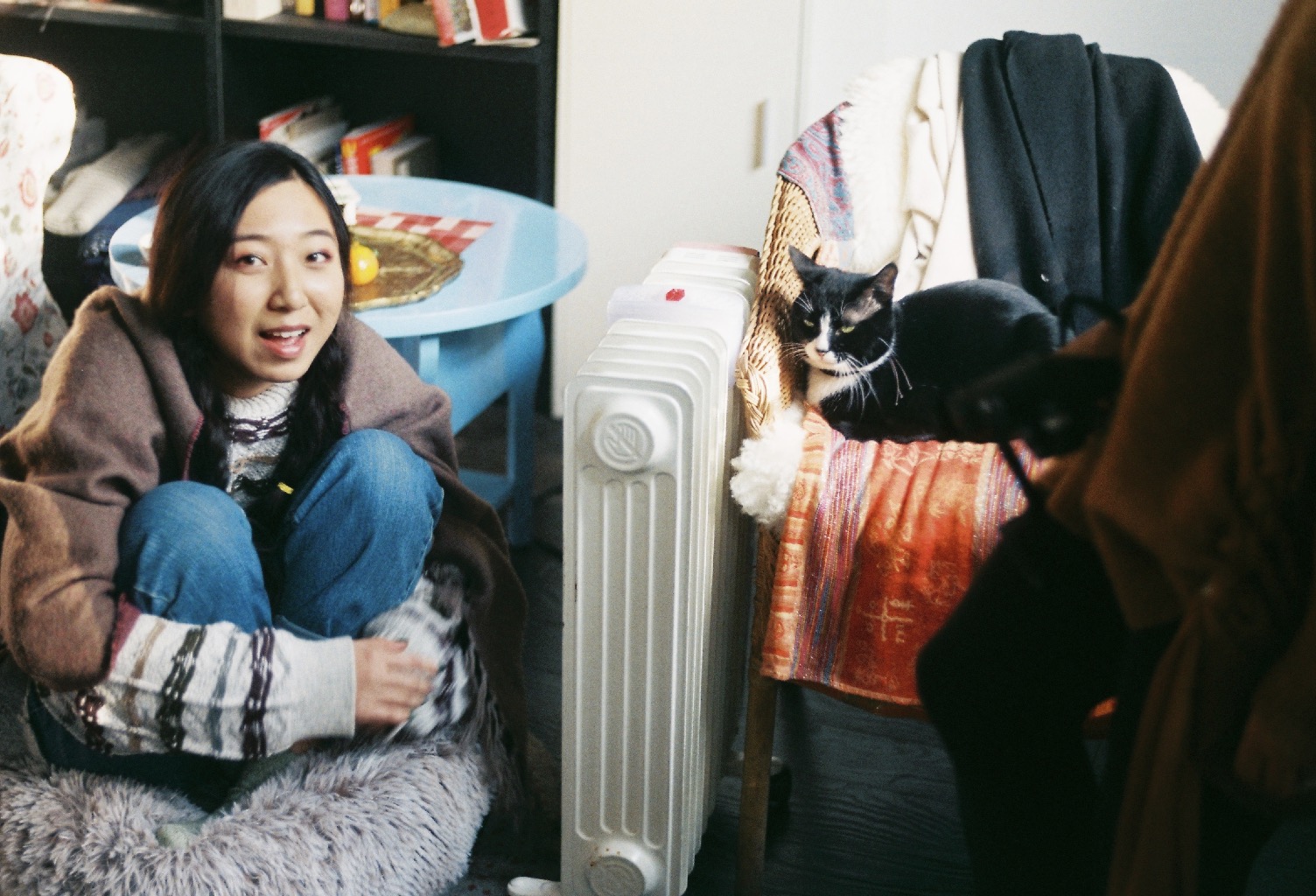
Jiayun Chen, born in 1997 on the banks of Ou River, and grew up alongside it. She obtained her BFA from the California Institute of the Arts in 2020 and has completed her Master of Fine Arts at USC Roski School of Art and Design in 2023. She currently lives in Los Angeles, USA. Her art practice engages with trophy-making, painting, sculptures, and installation-making. Her current creative series revolves around language and symbols with a particular focus on mistranslations between different languages, as well as the poetic and humorous aspects that emerge in different cultural contexts.
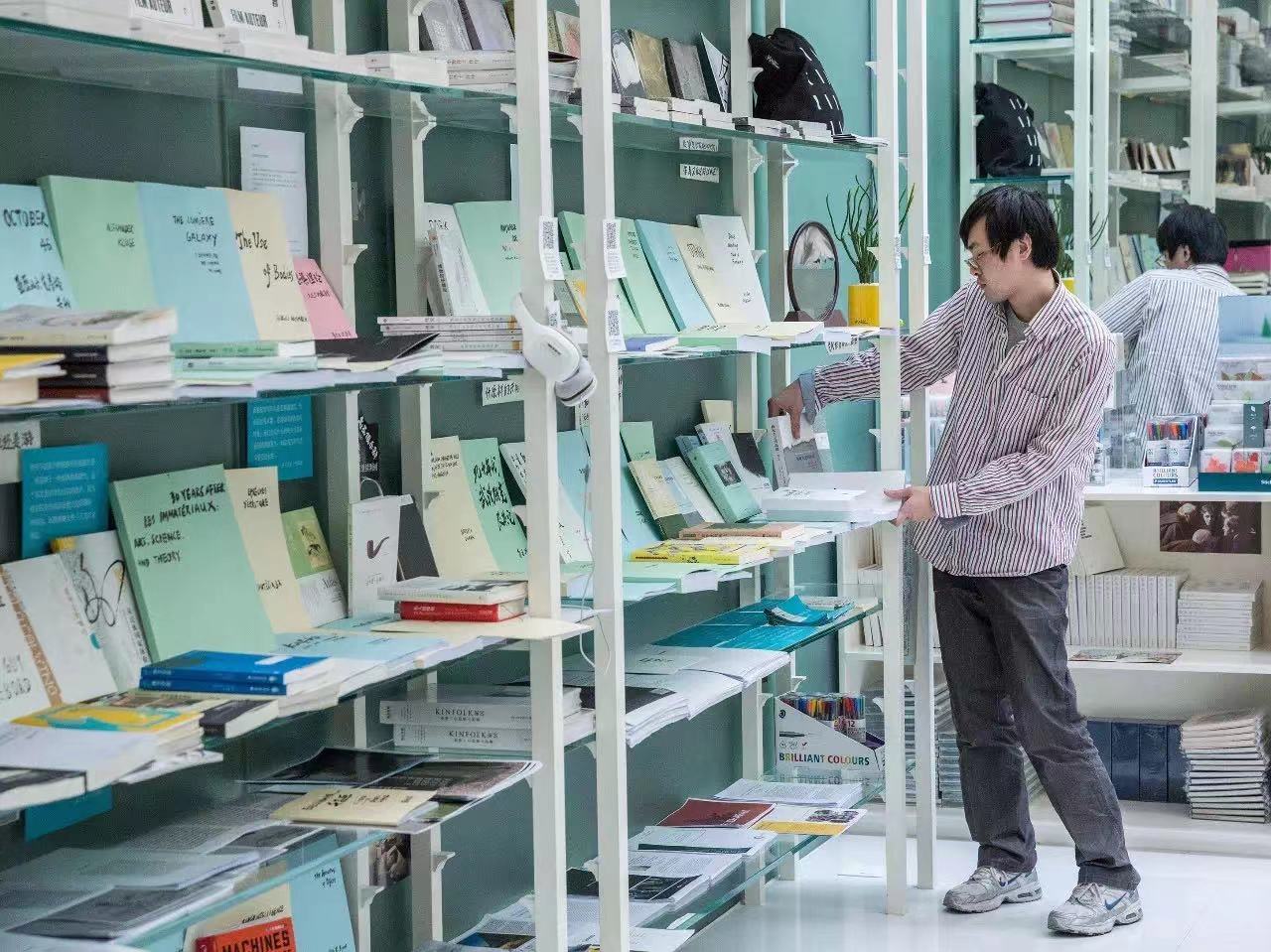
Pan He & Folded Room
Pan He, who previously ran a bookstore, is an urban wanderer and has participated in numerous art practices but isn't adept at creating artwork. Co-founder of "Folded Room," a participant in the 44 Monthly/Theater 44, and a member of the Manchufeierzi band.
Folded Room, how can multiple points on a piece of paper be connected in the lightest and most agile way? The Folded Room originates from "OnPractice," a communal project aimed at eliminating the inertia of power and the illusions of the individual subject. By roaming different cities and entering unexpected places, it seeks to foster a spatial network of mutual assistance concerning the experiences and pathways to activate.
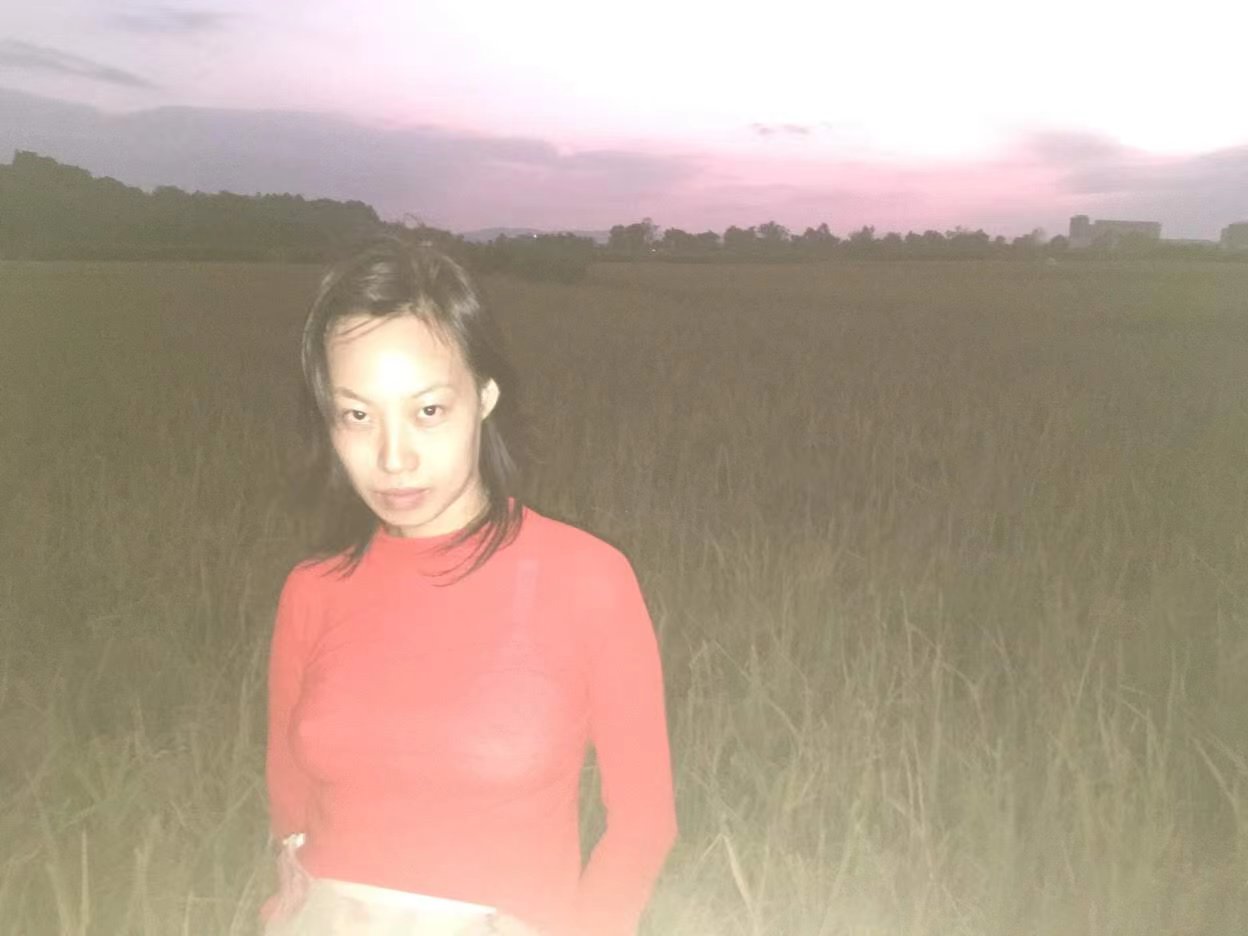
Miao
Miao, born in Dong Village, Chaoshan City in 1991, height 167cm, weight 57kg.
Her self-awareness is based on family and most of the works are copycat traditional customs and local operas.
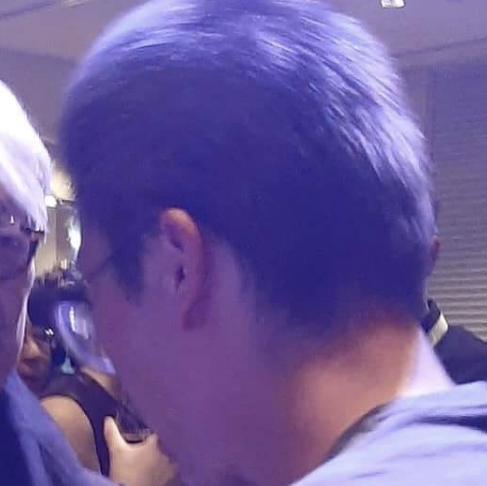
June LEE
June LEE was born in Yulin, Guangxi Province and currently lives and works in Wuhan.
He is an alternative comics maker, writer and activist who focuses on illustration and manga culture as an artistic tool within anti-gentrification movements, revolving especially around marginalized characters involved with issues of urbanization and spatial justice.
From 2010-2014, Lee co-organized Womenjia Youth Autonomy Lab, an open house and social experiment located near the historic East Lake on the urban fringes of Wuhan.
Unit 2
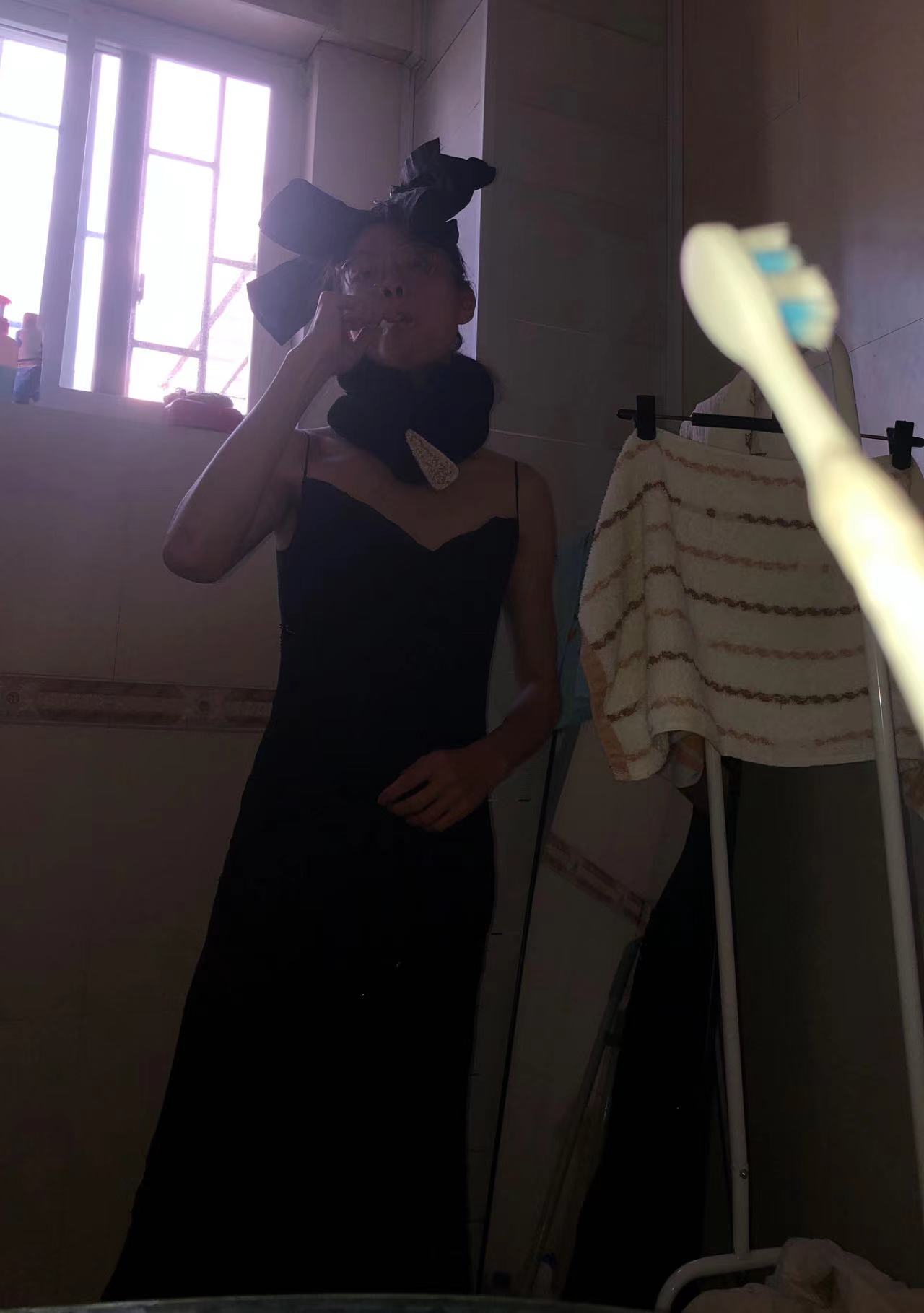
diyloveclub
I find myself not very good at art, especially at achieving success. I may be better at achieving failure, whether it's in life or creation. The only feature we ordinary people have far stronger than those successful people and big shots is we are way better at failure. Successful artists tend to do art that only they can do while others cannot. I want to do art that everybody can do, and I want to be an artist that everybody can also become.

feichuan
Feichuan is an open art space.
Within its two floors, there is an exhibition hall, a studio, a lounge, music performance equipment, and a film screening area, a small bar, a quiet reading room, and a place where you can sleep peacefully. There's also a bunch of people, all passionately engaged in various activities, playing music, performing, creating installations, painting, calligraphy, engraving, writing, making jewelry, crafting instruments, filming, practicing boxing and playing games.

Can ton won & BGD gallery
BGD gallery
A mini gallery that is based in Guangzhou and sells all kinds of works and products of the gallery owner and his friends.
It is pure vanity to run a gallery, unless it’s built for friends, including those we don’t yet know.
Can ton won
This is a stage name of a creative artist living in Guangzhou, who has several other identities, such as CEO of BGD gallery and one of the Cizhi Group members.
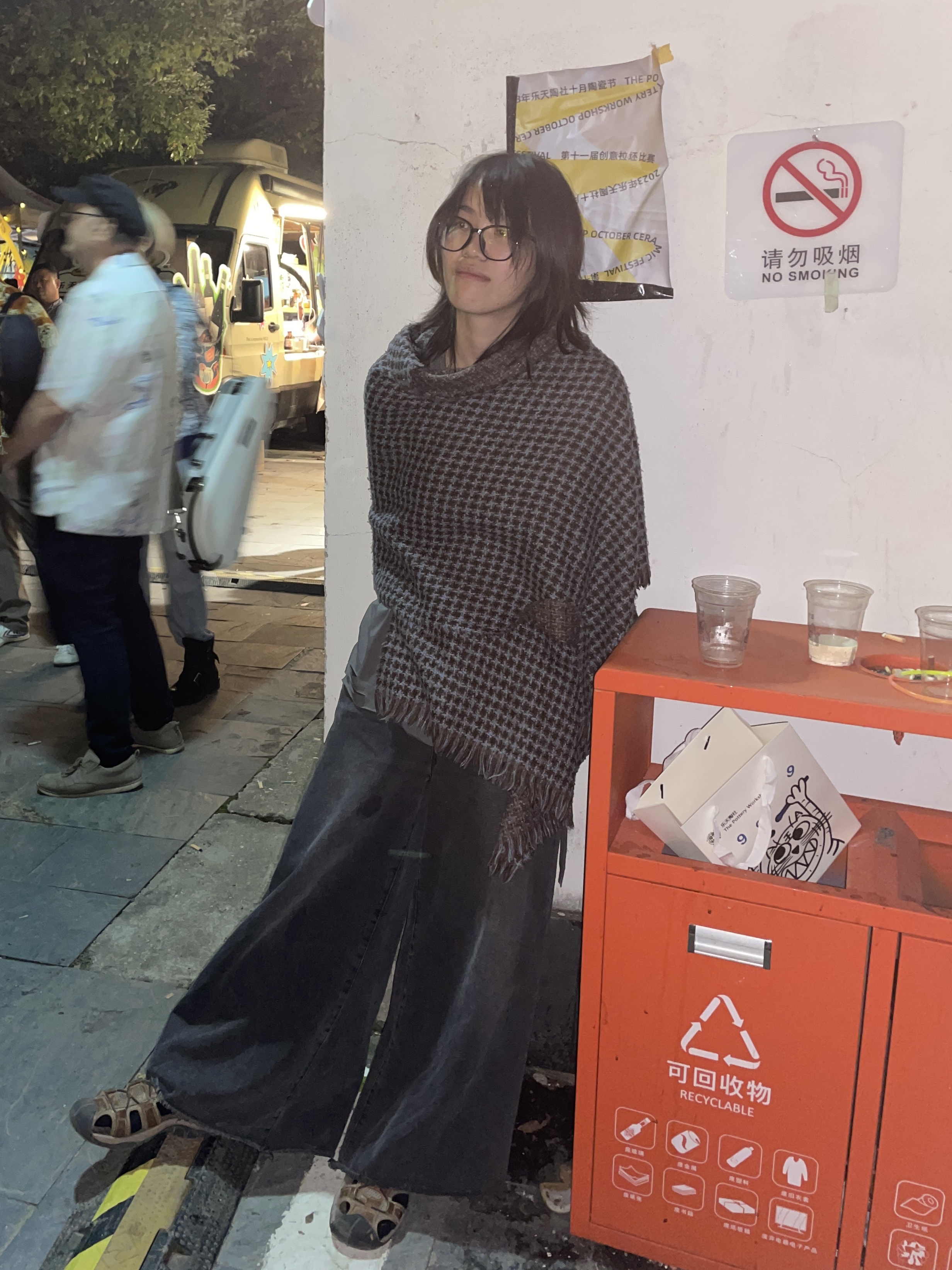
He Qiao
Born in Hechi, Guangxi in 2001, she graduated from the Department of Watercolor Painting of Guangzhou Academy of Fine Arts in 2023, and she is currently wandering and trying to do some art practice in the place where she wandered.
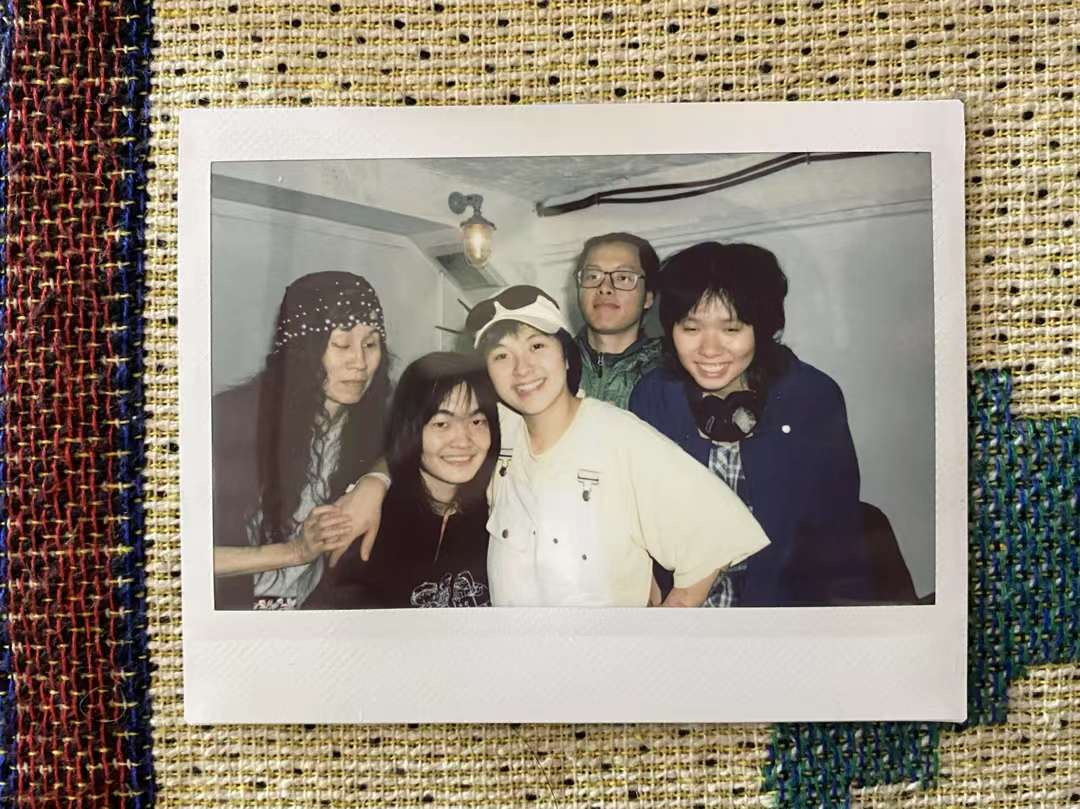
bAdbluEBiRdz
Five best friends, living in different parts of the world, play together a symphony of joy, happiness, noise, warmth, wetness, gardens, friendship, and create their life like a song.
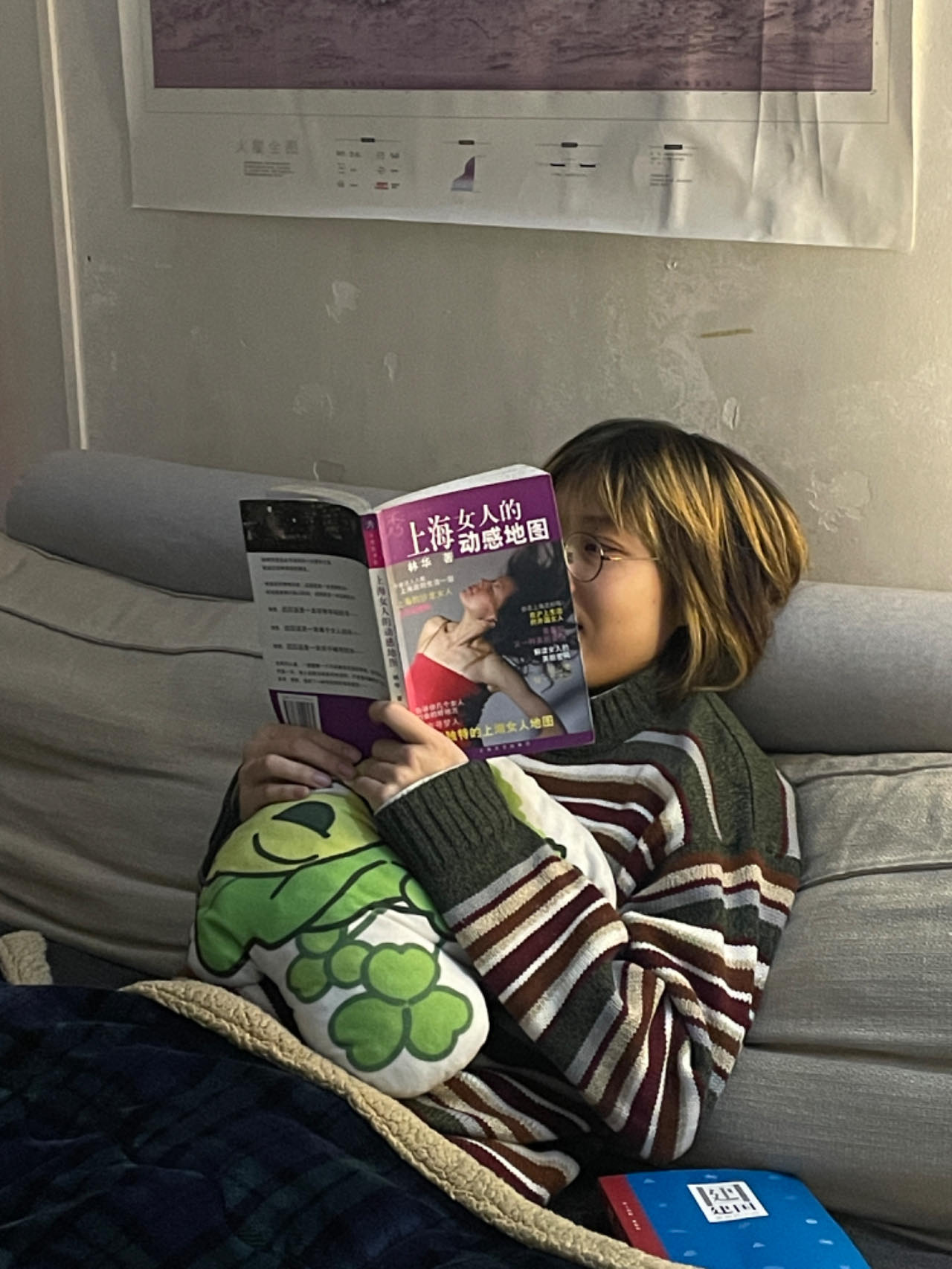
Luo Zha
Starting her activities as a member of the Plan C of Being together since 2018, and in 2021 she initiated the House of Lazy People at her own place of residence. By organizing activities such as creations, exhibitions, screenings and readings in semi-open home space, she is trying to practice social engagement in the context of everyday life and exploring some strategies for ordinary people to resist structural compression.
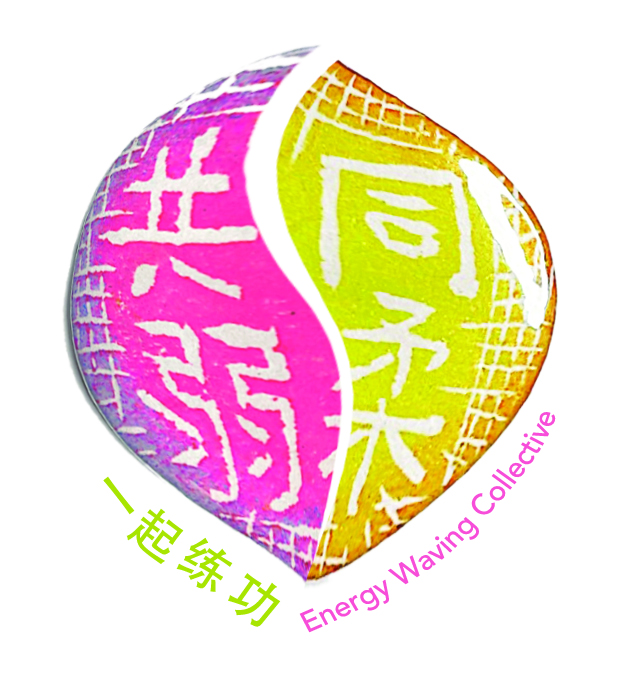
Energy Waving Collective
During the COVID-19 pandemic in early 2020, a few close friends, sensing the sharp contraction of public spaces and its impact on personal and community connections, as well as the increased need for cost-effective maintenance of physical and mental well-being and relief from emotional burdens, began to gather regularly at their residences. They engaged in practicing Tai Chi (loosening the body, standing meditation, and pushing hands) together while discussing and sharing topics of mutual concern.
After a while, these friends gradually stepped out of the homes, openly convening, practicing in street corners and park grounds, hoping to extricate this method from the traditional hierarchical mentorship of martial arts, and equally spread it to a broader audience. Emphasizing awareness, listening, and non-stress reactions to each other's physical and mental states, through continuous interaction with the body, cultivating and practicing mutual perception and tacit understanding.
The Energy Waving Collective was initiated by Feng Junhua, Wan Qing and Ou Feihong. It is mostly active in Guangzhou, but also happens in different places when spontaneously brought by friends who have participated. Rooted in Taoist thought, the core principles involve embracing "softness" and "fragility" as essential elements for generating, flowing, and transmitting energy. Overcoming the initial apprehension towards "s&f" (softness and fragility) is believed as the primary hurdle in this practice.
In 2023, the Energy Waving Collective introduced the initiative “Bound in Softness, Together in Fragility”. Beyond their daily practice, the group employed various forms and methods to present and discuss the profound understanding of “softness” and “fragility”, including collaborative creations, screenings, performances, and workshops. The primary goal was to shift the lens in a world that often idolizes power and privilege. The initiative also sought to explore various expressions of mutual support and responsive approaches.
Lively in form, joyful in effect,
Gender-friendly, attentive to each other,
Creative interactions, sparking mind and body!

Hongzheng Pan is the founder and director of Hong Museum. He holds a M.Phil. in East Asian Studies from the University of Cambridge and a M.Sc. in Sociology from the London School of Economics. He is also a participant in the "Seeing the First 500 Meters" Mapping Workshop.
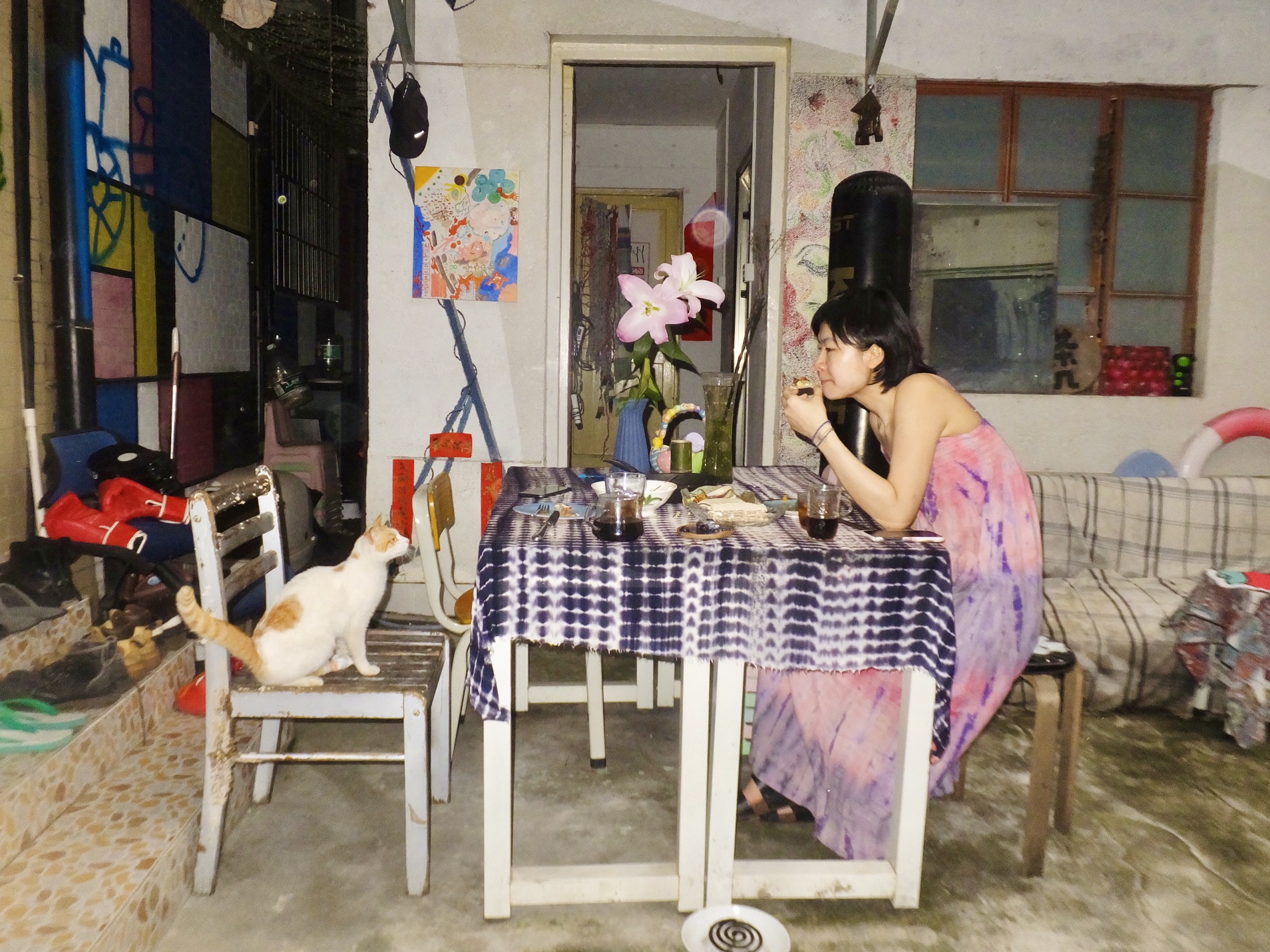
Peng Xueying, currently lives in Guangzhou, mainly works in theaters and exhibitions, recently has also fallen in love with cooking. Peng previously worked as a curator at FEI Arts, curated the exhibitions "Go to YOUR Art Museum", "ls This Theater?", "Hang lok gaai, Mann jay heoi", and co-curating "Seeing is Inviting: the Art and Life of Mulan and Her Friends". She is also a creator, continuing to launch theater actions and performances in different spaces not only at home but also on the street, such as "Deception action on the Street" and "Just Walking and See How it Goes? ".
Wenzhou is a city renowned for its high fluidity of population. Located in the heart of Wenzhou city, the Hong Museum stands as a beacon of artistic and social exploration. Its overarching goal is to rejuvenate and reinstate the interplay among art, social science, and the public by presenting and studying contemporary culture and art. We firmly believe that an art museum wields an essential influence in shaping society. As the embodiment of this vision, the museum serves as an entity, unifying the diverse facets of globalization and constructing a cultural institution that looks optimistically towards the future.